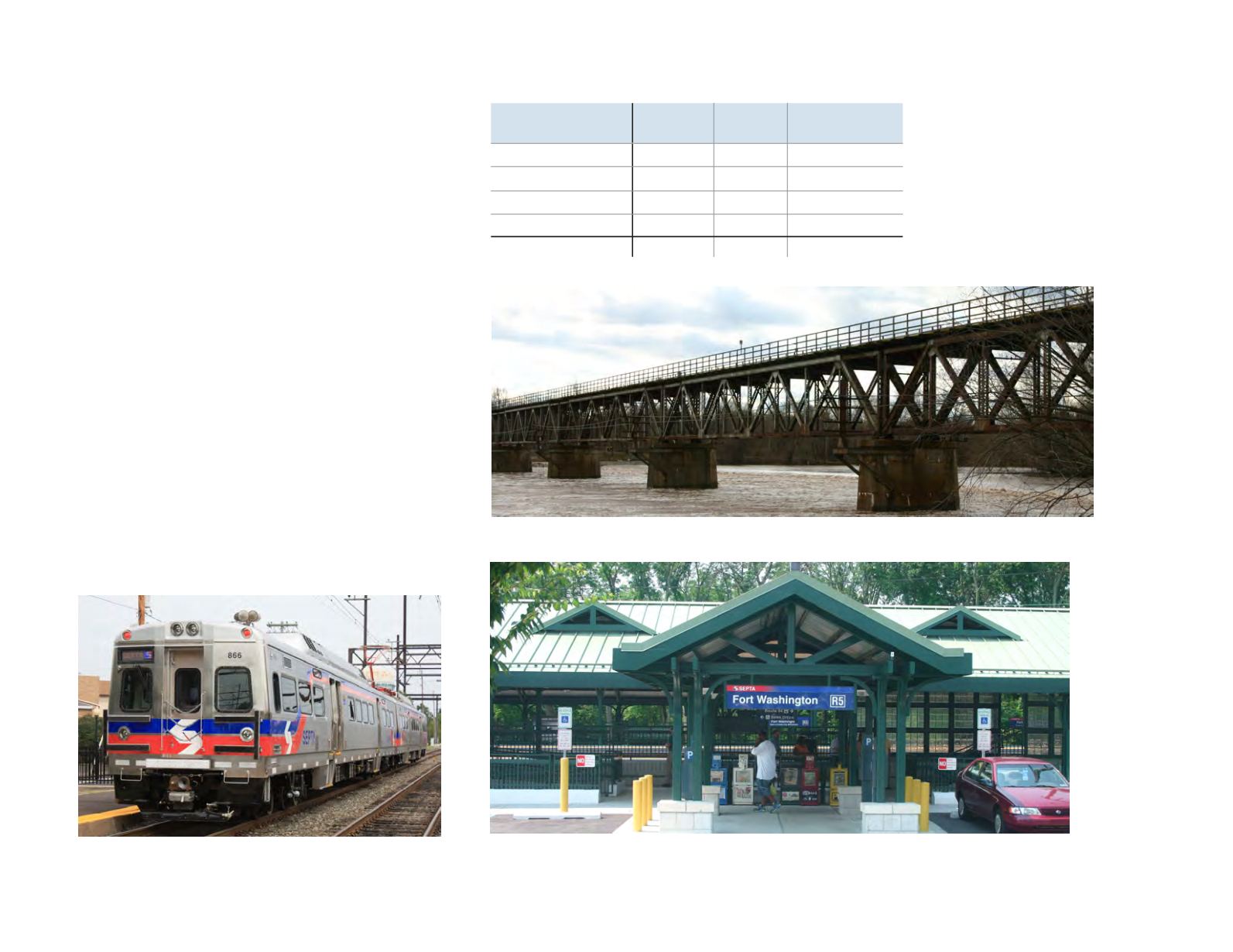
98
THE COUNTY’S TRANSPORTATION NETWORK
Silverliner V Regional Rail Train
backlog of $4.7 billion worth of projects necessary to
bring the entire system into a state of good repair and
perform essential safety upgrades.
In addition, there are federal mandates to install safety
measures, including regional rail signal system
modernization and Positive Train Control (PTC). A PTC
system, which is required to be operational by December
31, 2015 by the “Rail Safety Improvement Act of 2008,”
will help prevent train collisions by monitoring track
conditions and, whenever necessary, applying the brakes.
SEPTA’s current annual capital budget is approximately
$300 million (for FY 2013), well below the amount
needed to operate a world-class system. Those funds
come from three sources: $175.6 million from the federal
government, $122.4 million from the state government
and $5.2 million in local funding.
Unless additional subsidy is provided from state or
federal sources, SEPTA may be faced with higher
operating costs, reduced ridership, and lower revenue
from ticket sales, all as a result of service reductions.
In addition to intra-county service, the county is also
served by inter-city modes like Amtrak (which has a
station stop in Lower Merion, at the Ardmore train
station) and private bus lines that serve the Norristown
Transportation Center and provide service to cities
throughout the northeast.
FIGURE 66:
Transit Service Statistics
The newly rebuilt Ft Washington station along the Lansdale/Doylestown Line in Whitemarsh Township.
Funding has allowed for badly needed repairs to be made to the Bridgeport Viaduct; without these repairs, service on
the Norristown High Speed Line into Norristown could have been severely impacted.
SERVICE PROVIDER
MODE
NUMBER
OF LINES
ANNUAL RIDERS
(2011)
SEPTA
Bus
41
17,804,877
SEPTA
Rail/NHSL
6
12,074,854
PART
Bus
6
266,235
Greater Valley Forge TMA
Bus
2
58,000
Total
Bus/Rail
55
30,204,000
Source: SEPTA, PART, Greater Valley Forge Transportation Management Association


